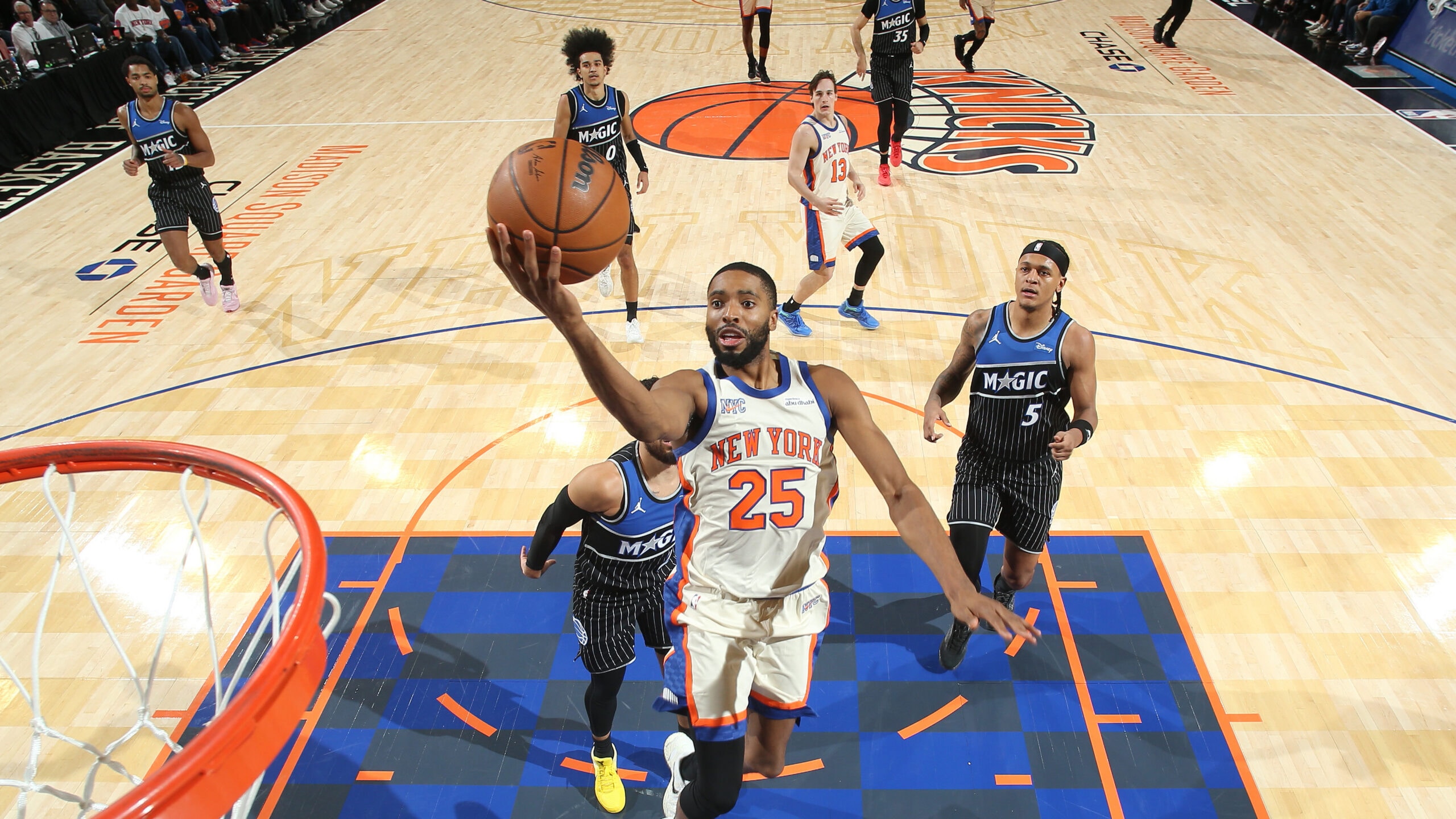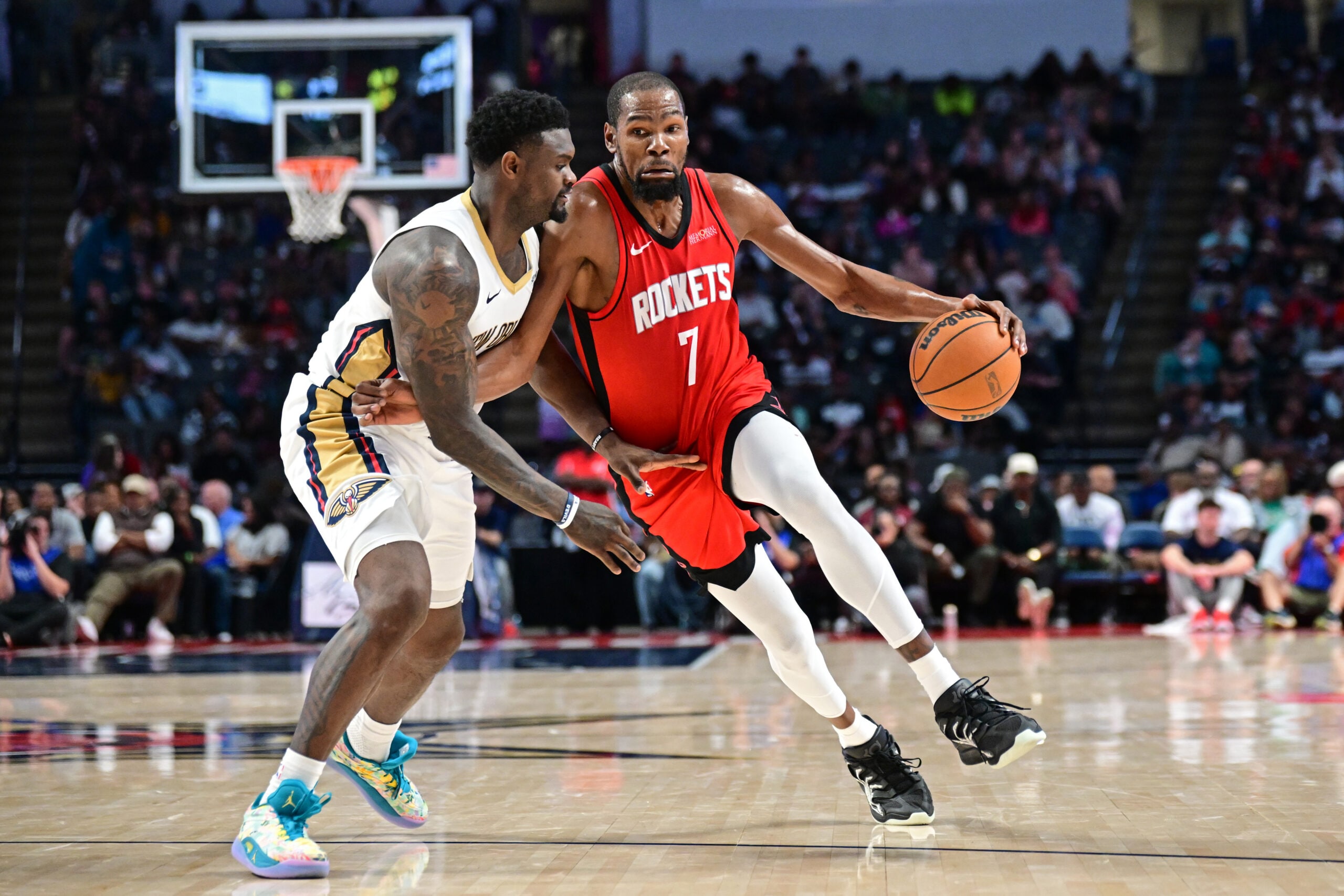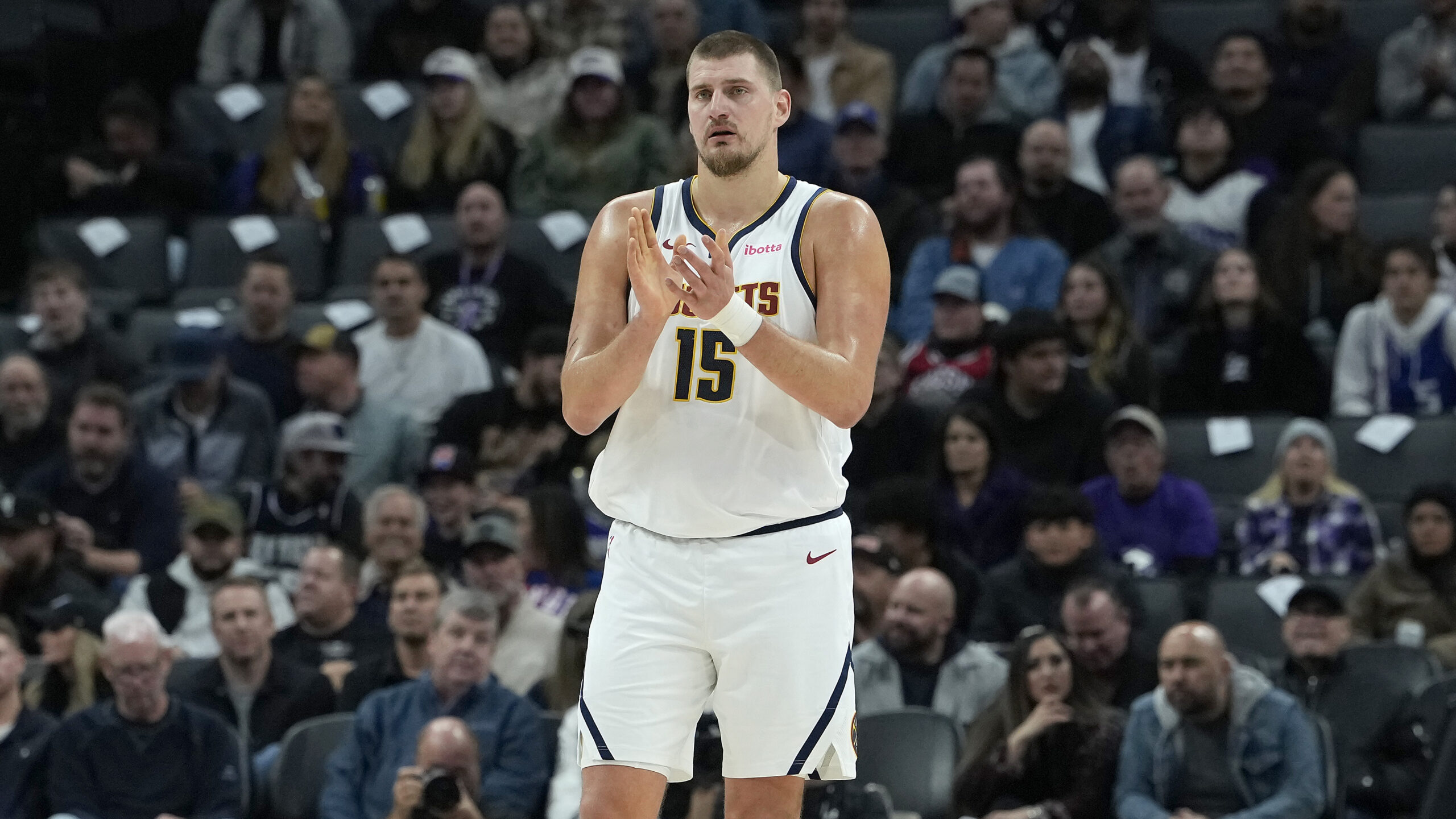
Luka Doncic is one of the best players in fantasy basketball.
Whether it’s your first time playing fantasy sports or you’re a seasoned fantasy football player looking for a new challenge, this guide aims to educate you about how to approach fantasy basketball. The tips and advice found here should help you construct a serviceable – and hopefully league-winning! – team, even if you haven’t been actively following the NBA.
Understand Your Format
As with all fantasy sports, league format can alter which players are most valuable. Fantasy basketball is typically scored in one of four ways: Rotisserie (often shortened to Roto), Head-to-Head Categories, Head-to-Head Points and Points.
Head-to-Head Categories pits you against another member of your league every week, with one winner and one loser. Those wins and losses determine who makes the playoffs, similar to real basketball. Winners and losers are determined by who accumulates the most stats in each statistical category (points, rebounds, assists, steals, etc.). For example, if your team accumulates 300 points, 200 rebounds and 100 assists, compared to my team’s 450 points, 150 rebounds and 99 assists, you’ve won the matchup two categories to one. This is the format most associated with fantasy baseball.
Head-to-Head Points follows the same concept, except victory is achieved by totaling the most fantasy points, determined by a preset value for each statistic, rather than separating each statistic individually. Typically, values are:
Points (+1)
Rebounds (+1.2)
Assists (+1.5)
Steals/Blocks (+3)
Turnovers (-1)
Head-to-Head Points is the typical format for fantasy football. Understanding how your commissioner assigns values is important. For instance, if your commissioner believes turnovers should be -1.5 instead of -1, that can change the value of turnover-prone point guards.
In Roto leagues, fantasy managers don’t directly compete head-to-head on a weekly basis. Stats from each category are added up over the course of the season and assigned a point value based on how far up the leaderboard you are in that stat. For example, if you’re in a 12-team league and have the most steals, you’re given 12 points. If you have the fewest rebounds, you’re given one point. That’s done for every category, and the manager with the most points at the end of the season wins the league. Points leagues can also be played in a non-head-to-head format, though the winner is based on total fantasy points rather than category dominance.
The difference between the four may seem subtle, but the scoring structure can significantly affect the fantasy value of certain players.
How to prepare for standard drafts
Once you have a grasp of your format, the day of your league’s draft should be much less intimidating. One of the main things to note about your league, which should affect how you draft, is how many players you are allowed at each position, as well as the number of bench slots.
Leagues differ. Some may allow for just one player at each traditional position with a utility and a deep bench. Others may allow for all utility players and few bench spots. It’s also important to note which players are eligible at each position as each fantasy contest or league management system varies.
How to prepare for salary cap drafts
Most drafts, like the one covered above, are a snake format. The manager with the first pick in Round 1 gets the last pick in Round 2. The manager with the last pick in Round 1 gets the first pick in Round 2. That same rule is applied across every draft spot.
However, there’s a different type of format that abandons the idea of draft spots entirely: the Salary Cap Draft. In Salary Cap Drafts, each manager is given a certain amount of money to spend on players. A player is nominated, and managers bid on that player. The goal is to make the best team possible with the money that you’re allotted.
Salary Cap Drafts are often tough for novices, and are generally best to avoid if you’re new to fantasy basketball. But they can be more rewarding and take on more traditional and true-to-life team-building strategies. The two main strategies are: Stars and Scrubs, or Balanced.
Managers operating under the Stars and Scrubs strategy will spend a huge chunk of their budget on All-NBA caliber players, and then fill out the remainder of their roster with role players. The belief is that a star player’s production is nearly impossible to replicate, and that role players can often be swapped in and out via the waiver wire mid-season.
Managers operating under the Balanced strategy try to spend their budget as evenly as possible. The theory is risk minimization. Investing a ton of money into star players can backfire if one or more get injured, and role players can often be inconsistent in their production and workload.
With both strategies, conserving budget and recognizing when player values are inflated due to bidding wars are useful skills. Valuable players exist at decent prices in later rounds.
The NBA waiver wire and its rules
Viewing the season in weeks, like fantasy football, rather than games, is important. If a player goes on a five-game cold streak in basketball, that’s relatively normal. If a player goes on a five-game cold streak in football, it’s time to sound the alarms. After all, five games in the NBA is just 6.1 percent of the season. Five games in the NFL is 31.3 percent of the season.
But, if one of your picks really isn’t panning out – whether it’s due to role, injury, age, etc. – don’t be afraid to cut and run. It happens every season.
Your most valuable resource, especially when searching for a replacement for one of your lower-end draft picks, is the waiver wire. Simply put: the players who weren’t drafted or were let go by another team.
Prior to making a move, try to identify whether Player X’s impressive performances are outliers or a trend. Plenty of players have a big game here and there – few can sustain unexpected play for an extended period.
The catch is that if you wait too long, someone else may snatch that player up. Each season, plenty of gambles are won and lost on the waiver wire. Carefully judging and timing when to snag the right player can sometimes have an immense influence on your season, as sometimes players are undervalued or have a favorable upcoming schedule and go off for major points.
There are two main ways in which a waiver wire may operate: Record-based, or budget-based (also called Free Agent Acquisition Budget, or FAAB). In a record-based waiver wire, the team with the worst record gets priority on all players with multiple claims. In a budget-based waiver wire, each team is assigned a dollar amount to spend on waiver wire pickups throughout the season. If you want to claim a player, you have to bid on them.
Weekly vs. daily lineups; Injured reserve spots
Fantasy managers need to know whether they set lineups every day or once a week and whether they have an Injured Reserve spot. Managers in weekly lineup leagues or leagues without an IR spot need to be more cautious on draft day. Absence-prone players do more damage in a weekly lineup league than in a daily lineup league. In a daily lineup league, you can start someone else in those games. In weekly leagues, the player simply generates no stats once the lineup locks.
Similarly, injuries are easier to wait out if your roster has an IR spot. It’s a place to put a player with a long-term injury that doesn’t count as a roster spot, so you’re allowed to pick up a player off the waiver wire without dropping someone.
Final notes
Above all else, fantasy basketball is a fun and engaging way to follow the NBA. Keeping up with player news and stats can help you build a winning team even if you’re a newcomer. Remember to understand your league format and stay active on the waiver wire, and your team should always remain competitive.









